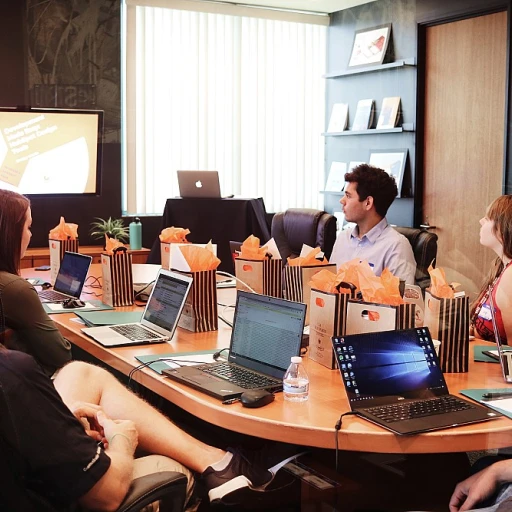
Defining Competency and Skill
Establishing a Foundation: Competency vs. Skill
In the realm of reskilling, understanding the nuanced difference between "competency" and "skill" is crucial. Competencies entail a blend of skills, abilities, and knowledge crucial for successful job performance in specific organizational contexts. This comprehensive framework includes both technical and soft skills along with cognitive abilities and behavioral traits. On the other hand, skills are individual capabilities that are job-specific, forming the building blocks of competencies. They are often more narrow in focus, such as technical skills like coding or spreadsheet management. The significance of differentiating skills from competencies lies in the way one approaches workforce development. Skills-based approaches give attention to specific job requirements, while competency-based frameworks emphasize broader performance outcomes within an organization. By clearly distinguishing the two, employees and talent management professionals can more effectively tailor development programs and measure outcomes. This understanding serves as a stepping stone to better comprehend the role each plays in elevating job performance and career growth within a business environment. To gain further insights into these foundational elements of reskilling that affect job descriptions and competencies, explore this understanding of skill levels in reskilling.The Importance of Competency in Reskilling
The Significance of Competency in the Modern Workforce
In today's rapidly evolving job market, the concept of competency is becoming increasingly crucial. As organizations strive to stay competitive, they are placing a greater emphasis on competencies. But why is this concept so essential in the context of reskilling? Competency, more than just a buzzword, is a critical foundation for effective talent management. It encompasses a combination of knowledge, skills, abilities, and behaviors that are essential for employees to perform their jobs proficiently. Unlike skills, which can be specific and more narrowly focused, competencies are broader and integrate various skills and capabilities. For businesses, emphasizing competencies can help build a resilient and adaptable workforce. In times of change, employees equipped with core competencies are better poised to transition into new roles or adapt to organizational shifts, ensuring business continuity and sustainable growth. Moreover, a competency-based approach to reskilling aligns with strategic talent management objectives. By identifying key competencies necessary for success, organizations can develop targeted development programs that address both the current and future needs of their workforce. This, in turn, leads to improved job performance and a more engaged workforce. Overall, understanding competencies provides a comprehensive framework for workforce development and aligns employees' career paths with organizational goals. For a deep dive into how skills are used by workers to create, you can explore this detailed guide on core capabilities.Skills: The Building Blocks of Competency
Understanding the Role of Skills in Building Competency
In the realm of reskilling, skills act as the fundamental elements that underpin competencies. Each skill you acquire, whether it's a technical skill like programming or a soft skill such as time management, contributes to developing the competencies needed in a specific job. These skills are the building blocks upon which robust competencies are constructed, both for personal career advancement and organizational success.
A skills-based approach helps employees measure tangible growth in their professional journey. Technical skills often reflect an individual’s capacity to handle specific tasks relevant to their job description, while problem-solving and time management skills foster capabilities that enhance workforce performance beyond standard expectations.
To effectively employ skills in developing competencies, organizations might adopt a competency management strategy, incorporating a skills matrix to map out existing skills and those required for future development. This skills matrix also assists in identifying skills gaps, enabling a more targeted approach in talent management and capability enhancement.
Ultimately, competencies signify an aggregation of skills, knowledge, and talent tailored to excel within one's role and career. For employees seeking to enhance their competencies, it is crucial to remember that skills alone are not sufficient. The synergy between refined skills, both technical and soft, and an understanding of individual and organizational goals is what drives meaningful career development and business growth.
Identifying Your Competencies and Skills
Pinpointing Your Strengths and Gaps
Identifying your competencies and skills marks a pivotal stage in the reskilling process. Often, it can be challenging to distinguish between competency and skill, especially when these terms are used interchangeably in everyday language. A concrete understanding of this distinction enables an accurate self-assessment. Competencies are a blend of skills, knowledge, and abilities allowing effective job performance, encompassing both technical and soft skills, along with behavioral attributes. Skills, on the other hand, are the specific abilities acquired through learning or practice.
To start, closely examine your job descriptions and align them with the organization's core competencies. This process involves a deep dive into job-based approaches, analytical thinking, problem-solving capabilities, and technical proficiency. An effective way to tackle this is by utilizing a skills matrix, a tool designed to map your skills and competencies levels, highlighting both strengths and areas for development.
When assessing your competencies, evaluate both your technical skills and soft skills, such as time management or communication skills. Consider seeking assistance from talent management professionals within your organization who can provide a competency matrix and job-specific evaluations. This ensures your self-assessment aligns with the organization's expectations.
- Leverage your organization’s talent and competency management frameworks.
- Use a competency-based approach to clearly outline your skills and performance requirements.
- Engage in self-reflection to understand which skills and capabilities need enhancement.
- Regularly update your skills' matrix, particularly when transitioning into new business roles or pivoting your career path.
Once you identify the key skills and competencies vital for your current and future roles, you can begin to form a comprehensive development plan. This proactive strategy not only enriches your personal growth but also contributes to the overall success of your organization’s workforce.
Strategies for Developing Competencies and Skills
Steps to Enhance Your Abilities
When embarking on your reskilling journey, adopting a strategic approach to develop your competencies and skills is essential. The process involves a series of deliberate actions, supporting both personal and organizational growth.- Assess and Prioritize: Begin by evaluating your current skills and competencies. Identify core competencies that align with your career goals or job descriptions. Consider using a competency matrix to map existing capabilities and potential growth areas.
- Set Clear Goals: Define specific, measurable goals for developing your skills and competencies. This will guide your learning process and provide a roadmap to success. Align these goals with your organization’s objectives and talent management strategies for a competency-based approach.
- Utilize Learning Resources: Take advantage of various learning platforms and resources. These may include online courses, workshops, and technical skill development programs. For example, job-specific training programs can improve both technical and soft skills in the workforce.
- Engage in Practice and Feedback: Practical application of skills is crucial for competency development. Seek opportunities for on-the-job learning and consistent feedback. This will enhance your performance and problem-solving capabilities.
- Participate in Cross-functional Projects: Engaging in cross-functional teams or projects can broaden your knowledge base and refine your skills. Cross-departmental collaboration promotes a deeper understanding of various competencies and enhances your skill set.
- Commit to Continuous Improvement: Development is an ongoing process. Regularly revisit your goals, reassess your skills matrix, and adapt your learning strategies to new business demands. This commitment will ensure your skills and competencies remain relevant.
Measuring Success in Reskilling
Key Indicators for Evaluating Reskilling Outcomes
To effectively measure success in reskilling initiatives, organizations need to identify robust indicators that align with both individual and business goals. The primary goal is to ensure that employees not only acquire new skills but also develop competencies that drive performance improvement across the organization.
Here are several strategies to effectively evaluate reskilling outcomes:
- Competency Assessments: Utilize competency and skills assessments to gauge the depth of skills knowledge that employees have acquired. This process helps in identifying any gaps between the job descriptions and the actual skill levels of the workforce.
- Performance Metrics: Monitor changes in job performance and productivity. Improved technical skills and enhanced problem-solving capabilities positively influence job performance, demonstrating the effectiveness of the reskilling efforts.
- Feedback Mechanisms: Implement employee feedback systems to gather insights on the learning experience and perceived value of the skills development undertaken. This feedback can inform future reskilling strategies.
- Career Advancement: Observe how skills and competencies gained through reskilling affect career progression within the organization. Successful reskilling should lead to upward mobility and enhanced talent management.
- Business Outcomes: Align reskilling outcomes with broader business objectives. Measure the impact of updated skills and competencies on key business metrics such as innovation, customer satisfaction, and revenue growth.
- Competency Matrix: Develop a competency matrix to map skills capabilities against current and future job requirements, ensuring a stable and flexible talent pool ready to meet organizational needs.
Alongside these methods, effective time management in deploying reskilling programs plays a crucial role in achieving desired outcomes. A structured, competency-based approach supported by a comprehensive skills matrix will bolster an organization’s efforts to nurture a capable and adaptable workforce, enhancing overall business resilience and adaptability in a competitive market.













